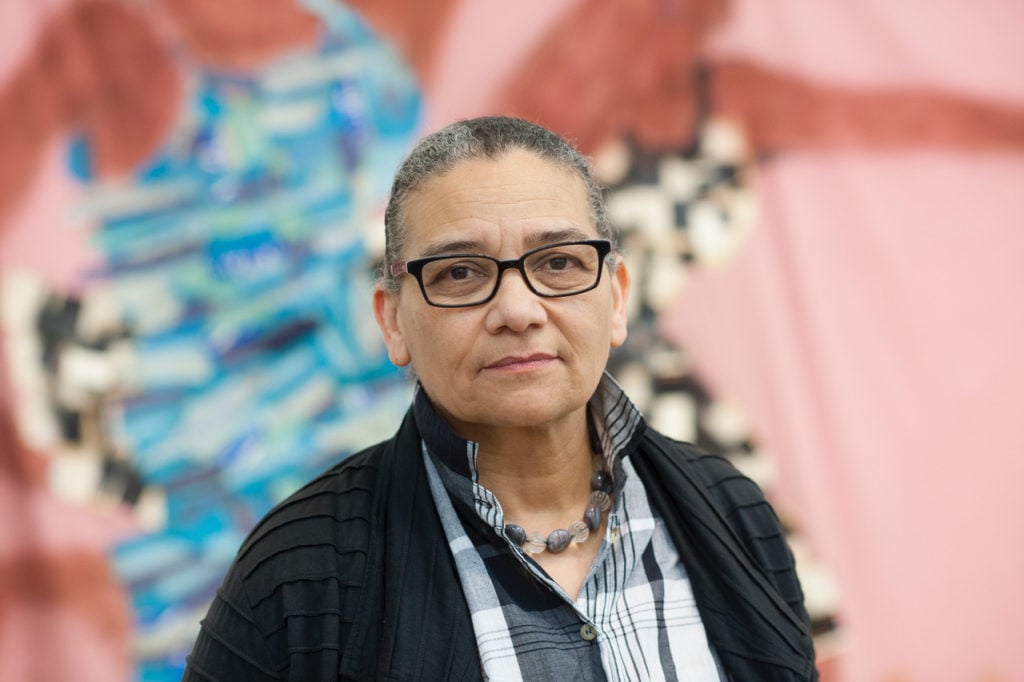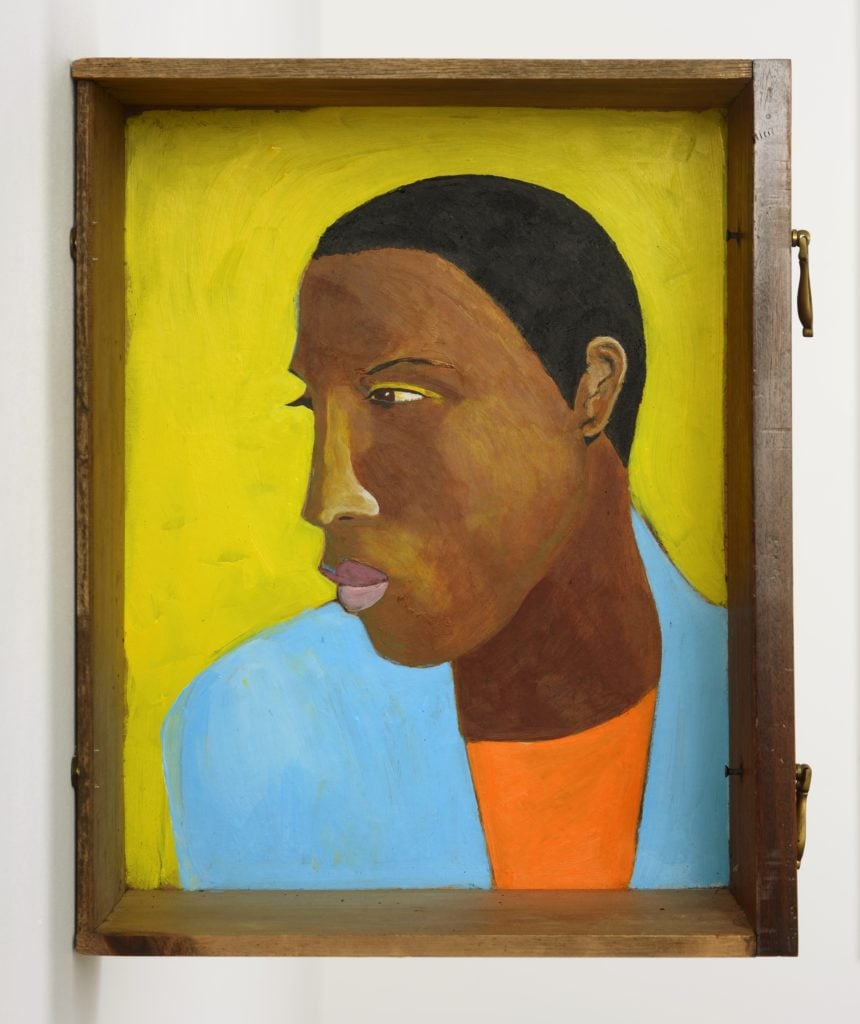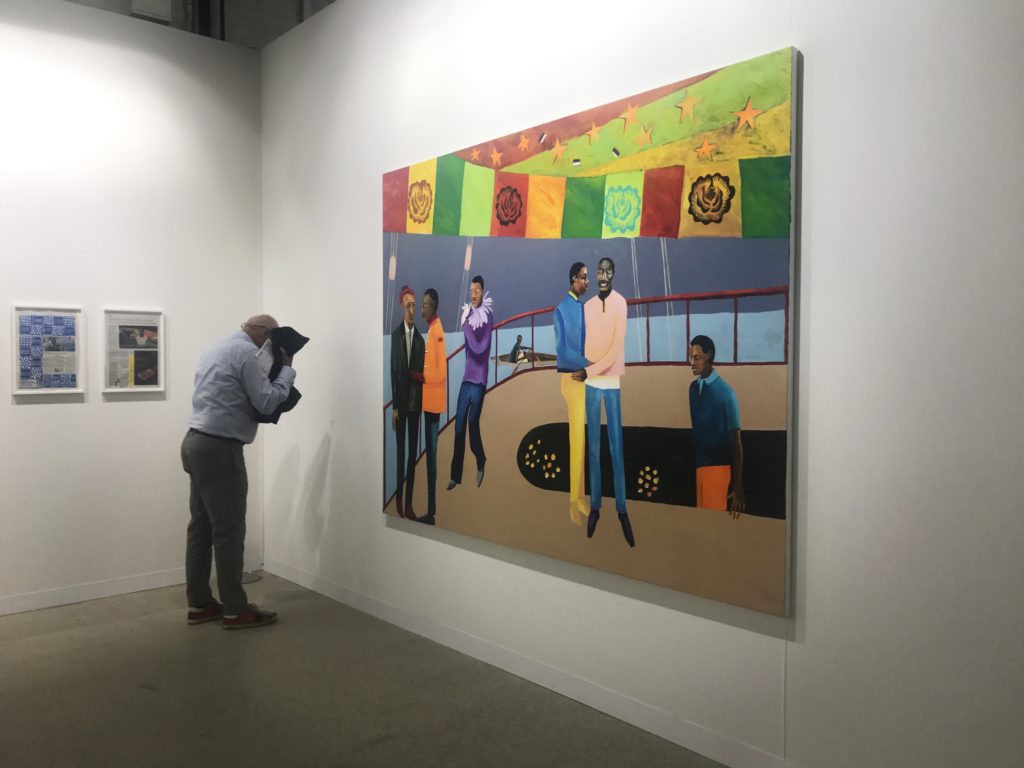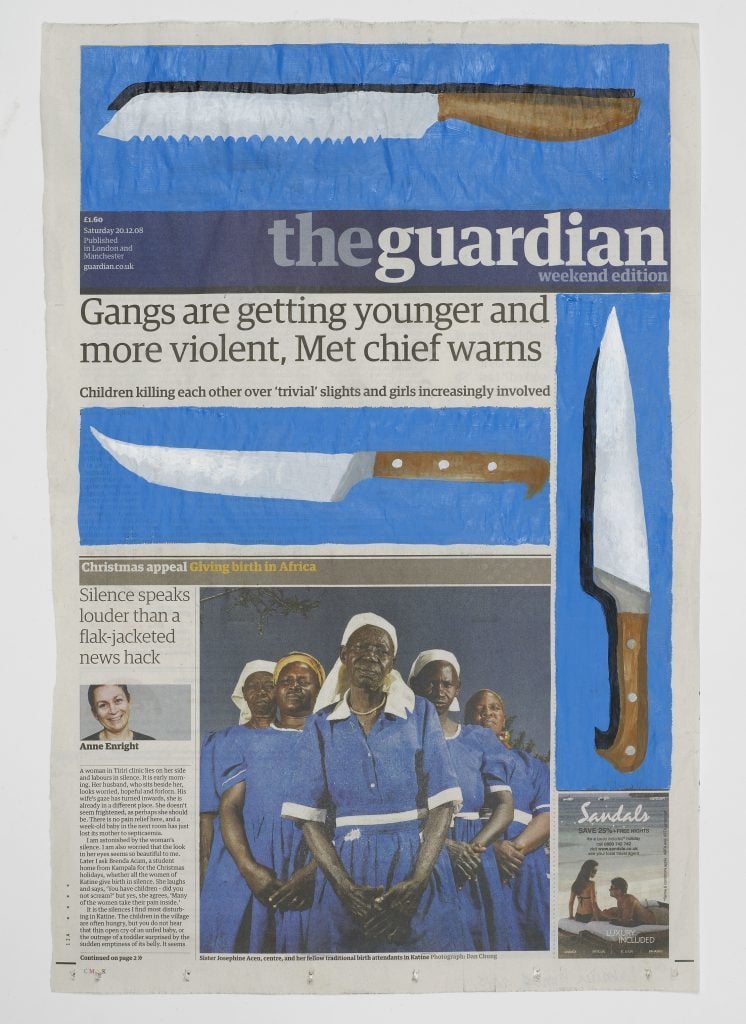Art Fairs
Turner Prize-Winner Lubaina Himid Is a Star at Art Basel—and She’s Getting a Solo Show at the New Museum
Curators and collectors at Art Basel are clamoring for the artist, who long lacked consistent representation.

Curators and collectors at Art Basel are clamoring for the artist, who long lacked consistent representation.

Julia Halperin

Many artists know that it can take decades to become an overnight success. Lubaina Himid, the 64-year-old British artist, knows this even better than most.
For more than 30 years, the Tanzania-born, UK-based artist has been a quiet but consistent presence in UK regional galleries and collections. But over the past five years, she has gained a much more high-wattage kind of visibility, appearing in major international biennials and landing solo museum exhibitions at an increasingly rapid clip. Last year, she became the oldest person and the first black woman to win the Turner Prize.
Himid remains a relatively unknown quantity for most US audiences—but that won’t be the case for long. Next summer, artnet News has learned, Himid will make her US museum debut with a solo show at the New Museum in New York.

Lubaina Himid’s Ball on Shipboard (2018). Photo: Andy Keate, courtesy of Hollybush Gardens Gallery.
At Art Basel, the toniest of art fairs that opened to VIPs in Switzerland today, the London gallery Hollybush Gardens has dedicated its entire stand to Himid. And her work is selling briskly. By mid-afternoon on Tuesday, eight of 10 works from an ongoing series of painted pages from the Guardian newspaper had sold for £6,000 each; a portrait painted on the underside of an antique drawer sold for £30,000 to a private collector; and a brand new, brightly colored painting priced at £110,000 was on hold for an international museum. Only a small handful of works remained available.
Not bad for an artist who, according to the gallery, did not have consistent commercial representation until 2013. “She didn’t really have a pricing structure when we started representing her,” Hollybush Gardens’s director Lisa Panting told artnet News. A painting of similar size to the one at Art Basel would have gone for around £40,000 when Himid first started working with the gallery.

Lubaina Himid’s Man in A Shirt Drawer (2017–18). Photo by Andy Keate, courtesy of Hollybush Gardens Gallery.
Now, she has solo shows at the Baltic Centre for Contemporary Art in the UK (through October 28) and the MRAC museum for contemporary art in France (through September 16). She also has work in the Berlin Biennale (through September 9) and next year’s Sharjah Biennial.
Though her prices have risen considerably over the past five years, her market hasn’t quite caught up to her growing stature—yet. Without any competing representation, the gallery has opted to keep her work affordable in order to attract institutional buyers. (Panting estimates around 70 percent of her works end up with museums.) “What often happens when an artist gets US representation is galleries will say, ‘These prices are too cheap,’” Panting notes, “but then it becomes hard for institutions.” This dynamic, however, is unlikely to remain the case for long.
The gallery discovered Himid’s work only a few years ago, when Panting was doing research on British art of the 1980s and kept coming across her name. She looked up Himid’s website, found her email address, and sent her a note asking to visit her studio in Preston, more than four hours’ drive northeast of London. The day after the visit, she asked Himid if she would open the gallery’s new space in Clerkenwell.

A fair-goer looks at Lubaina Himid’s Ball on Shipboard (2018). Photo: Julia Halperin.
Himid’s work is wily: It draws you in with bright, saturated colors and graphic, easy-on-the-eyes forms that reflect her training in theater design. But take a closer look—that’s when she twists the knife, revealing uncomfortable truths and biases in art history, politics, and visual culture.
From 2007 to 2017, Himid collected and painted pages from the Guardian to highlight subtle (and sometimes not so subtle) media racism. The liberal paper “has this extraordinary habit of placing negative texts, about something else entirely, next to images of black people,” she said last year. A front-page story about gang violence, for example, is juxtaposed with a photograph and essay about African midwives, while an article about three professional football-playing brothers from Samoa bears the woefully dehumanizing headline, “What has six arms, six legs, and weighs 340kg? The Tuilagi clan go head to head in Europe.”

Lubaina Himid’s Gangs are getting Younger (2008), from “Negative Positives: The Guardian Series.” Photo: Andy Keate, courtesy of Hollybush Gardens Gallery.
With a busy slate of projects and a long list of admirers, Himid has wasted no time using her newfound stature to help elevate others she says have been unfairly overlooked. “I know quite a lot of people she’s directly given funds to to support exhibitions,” Panting adds. She has also encouraged curators organizing her shows to include other local black artists in educational programs and talks.
“The Turner Prize changed all sorts of things,” Himid said in an interview with the New York Times earlier this year. “Now, if I say I want something, people try and do it for me, and that’s never happened to me in the whole of my life.”